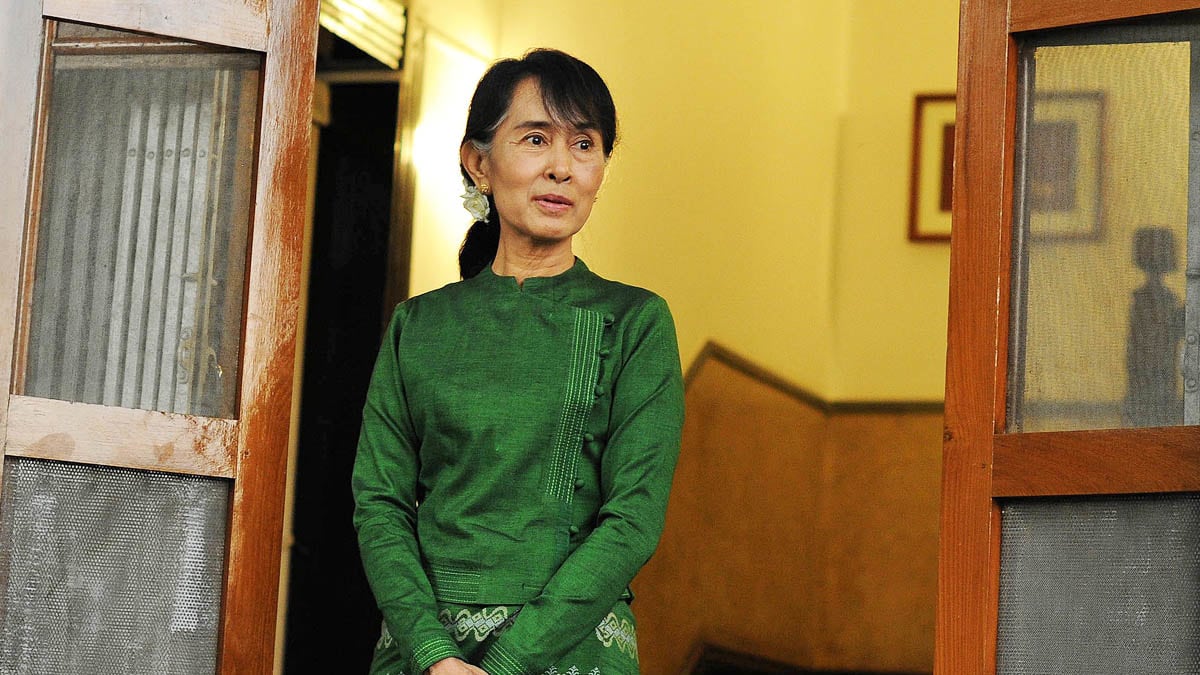The last time she was in the U.S., Richard Nixon was president, Watergate was just a large Washington office complex, America was pulling its troops out of Vietnam, and her countryman, U Thant, was about to stand down as secretary-general of the United Nations. Aung San Suu Kyi had been working in a humble role on the U.N.’s staff; she left to marry Michael Aris, an English expert on Tibet, and to settle down with him in Oxford.

Back in 1971, with the dictator Ne Win holding Burma in an iron grip, any idea of doing something different with her life—throwing herself into Burmese politics, for example—must have seemed the stuff of fantasy. Yet Suu Kyi allowed herself to dream. From the small flat she shared with a Burmese friend on Beckman Place, around the corner from U.N. headquarters, she wrote Aris no fewer than 187 letters, and in some of them she revealed her crazy dreams. “I only ask one thing,” she wrote, “that should my people need me, you would help me to do my duty by them… Would you mind very much should such a situation arise?”
Forty years on, the transformation is almost complete. Suu Kyi returns to the U.S. on Sunday not only as a world-famous champion of human rights but as a member of parliament and the most powerful politician in Burma after President Thein Sein. She is the de facto leader of the opposition, and within three years could well see her party, the National League for Democracy, take the reigns of government.
Although she will pick up some of the many honors she was awarded during her years of house arrest, there will be nothing sentimental about Suu Kyi’s return to America. Invited by Hillary Clinton during their meeting in Rangoon last December, she will spend the first six days of her two-week trip in Washington, where the next stages in Burma’s helter-skelter reform process will be at the top of the agenda.
As the Center for Strategic and International Studies reported this week, the reforms initiated by Thein Sein in August 2011 after his historic first meeting with Suu Kyi are forging ahead: Burma, the report states, “is in the early stages of moving towards transformational change in nearly all respects.” The economy could grow by more than 10 percent next year, creating millions of new jobs in a country where 26 percent live below the poverty line; today, flights to Rangoon are packed with businessmen sniffing out the possibilities. Yet the challenges are as numerous as the opportunities. “Barriers to growth,” says CSIS, “include political instability, corruption and the lack of transparency, lack of education, a dearth of training, and poor infrastructure.”
The tightrope Suu Kyi has to walk is to get democracy and civil society functioning, bring peace to the borders, open the economy without handing it over to rapacious buccaneers, keep the military’s plutocratic cronies in check, all the while retaining her most precious asset, the trust and support of the masses. She needs all the help the West can give her.
Her final days in New York, Sept. 25 and 26, coincide with the arrival of Thein Sein for the U.N. General Assembly. The unlikely alliance of the democracy icon and the ex-general has continued to evolve in recent months, as the president presses ahead with his reform plans and sidelines conservatives who want to block them. Both know they need each other: expect a joint press conference on the margins of the General Assembly where they will spell out their vision of Burma’s road ahead.





